Photographs of Permanent Exhibits at the
Presidio Army Museum
Click Here for Information on Permanent Exhibits
1906 San Francisco Earthquake and Fire
Panama-Pacific International Exposition
World War I
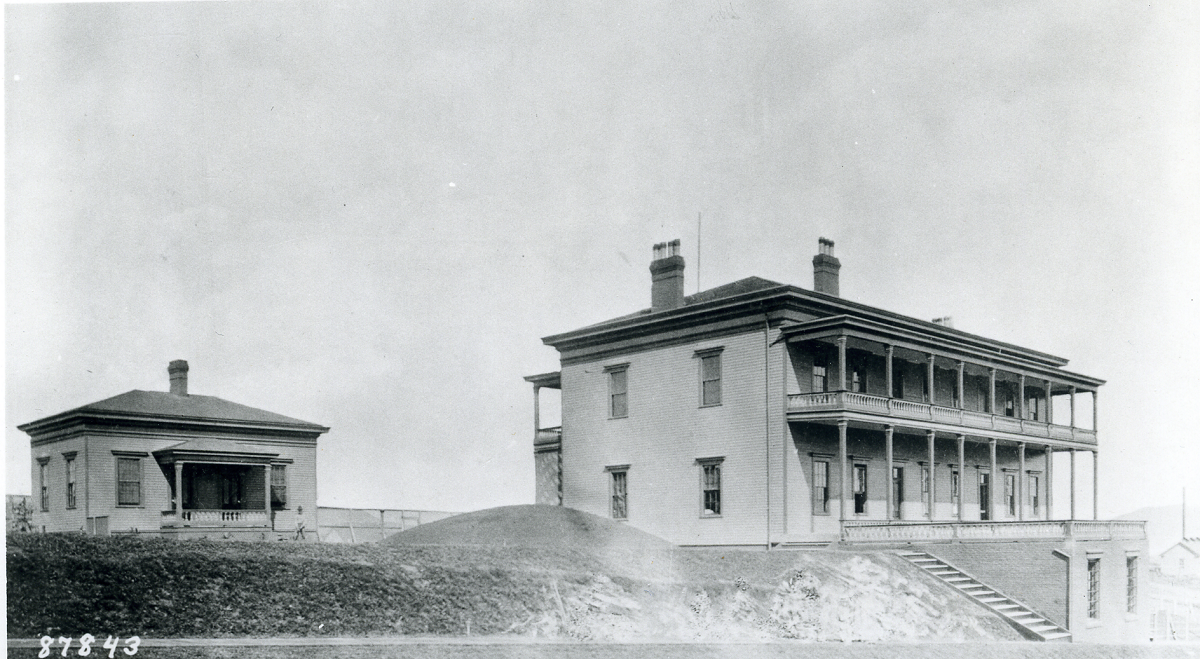
Old station hospital was built in the Presidio at the beginning of the Civil War. Building on left was the quarters for the hospital steward.

The original Presidio hospital building was used for several decades as a processing center and dental clinic. It was designated as the Presidio Army Museum in 1973.
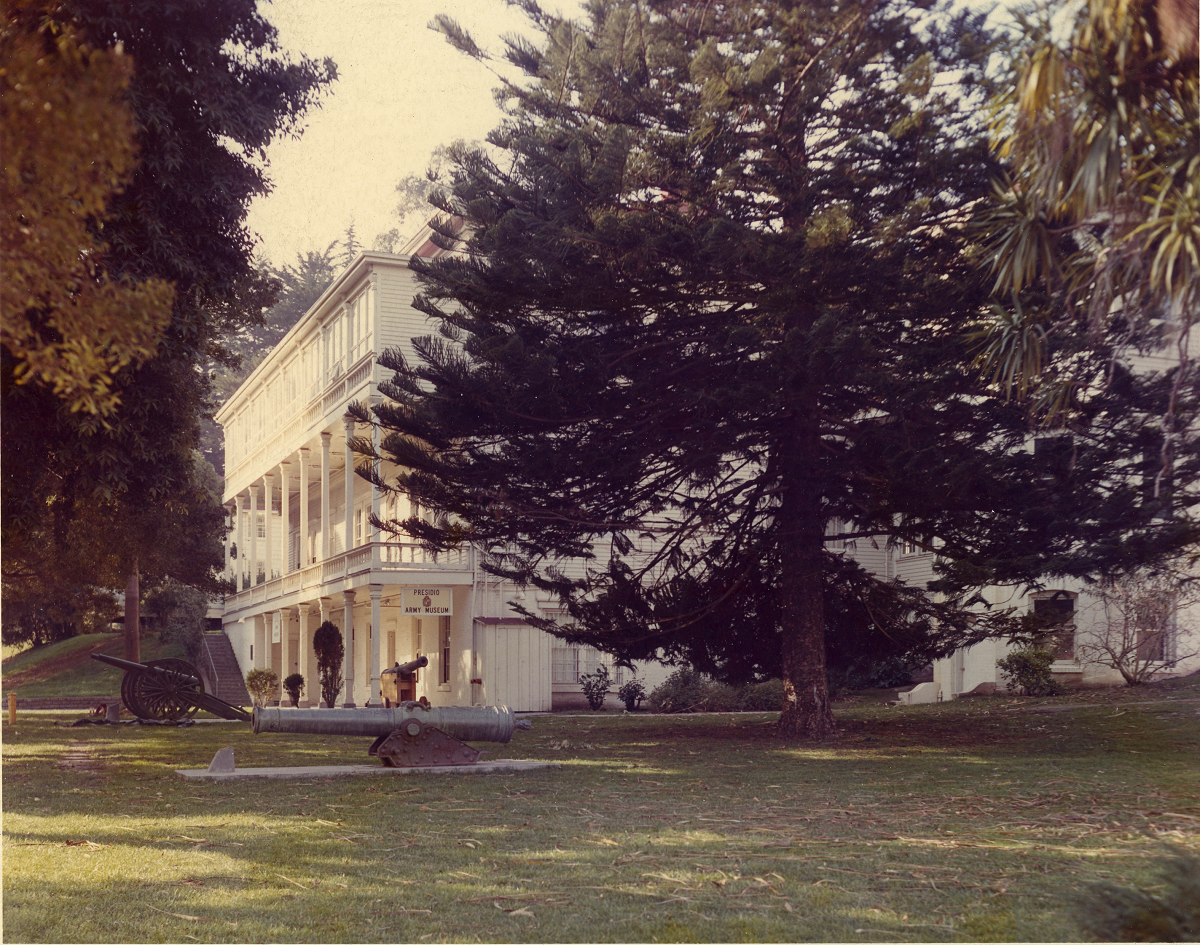
The Presidio Army Museum was located at Lincoln and Funston Avenue. The Museum was designated at Building #2 on the post. Photos circa early 1970s.

East facing façade of the Presidio Army Museum.
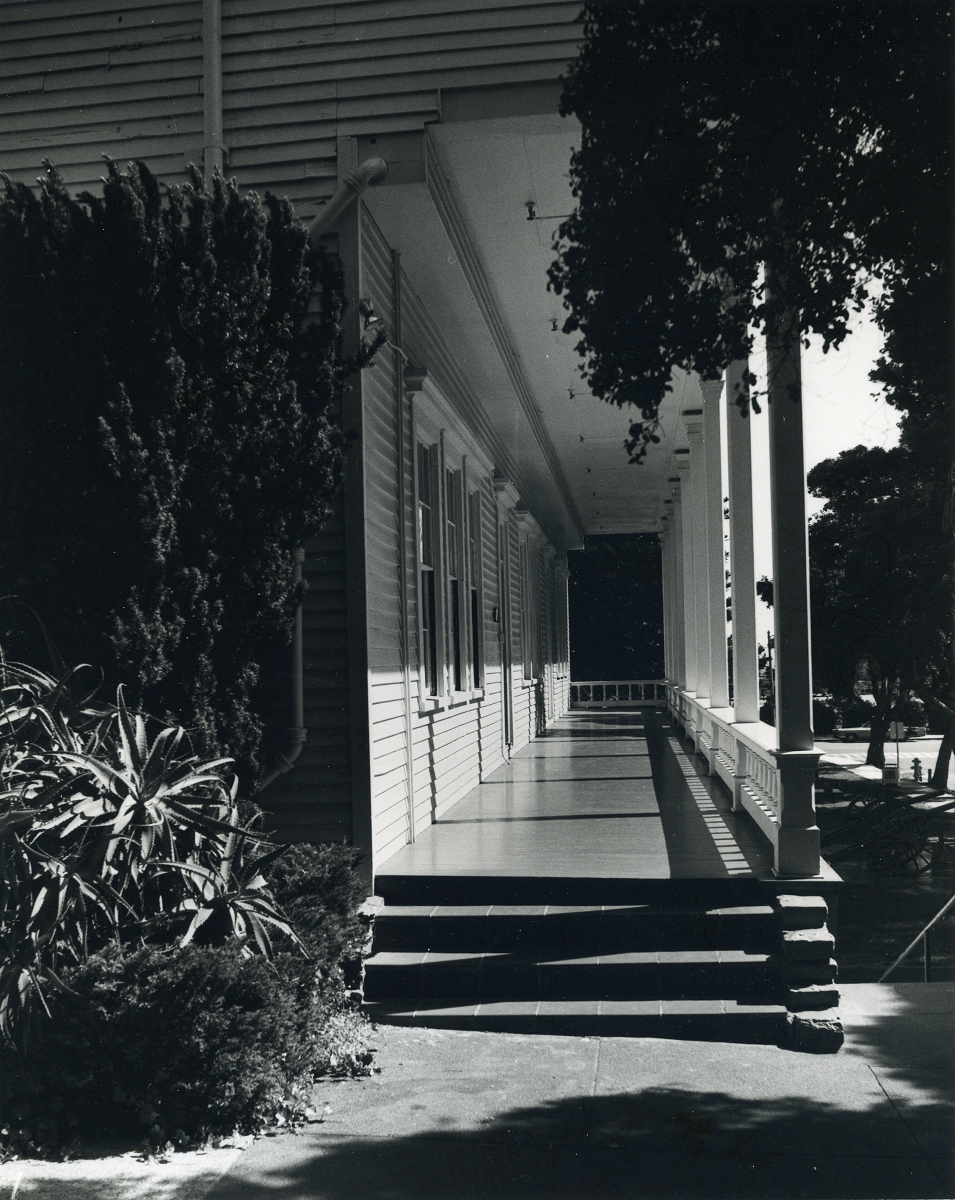
Porch and front entrance to the Presidio Army Museum.
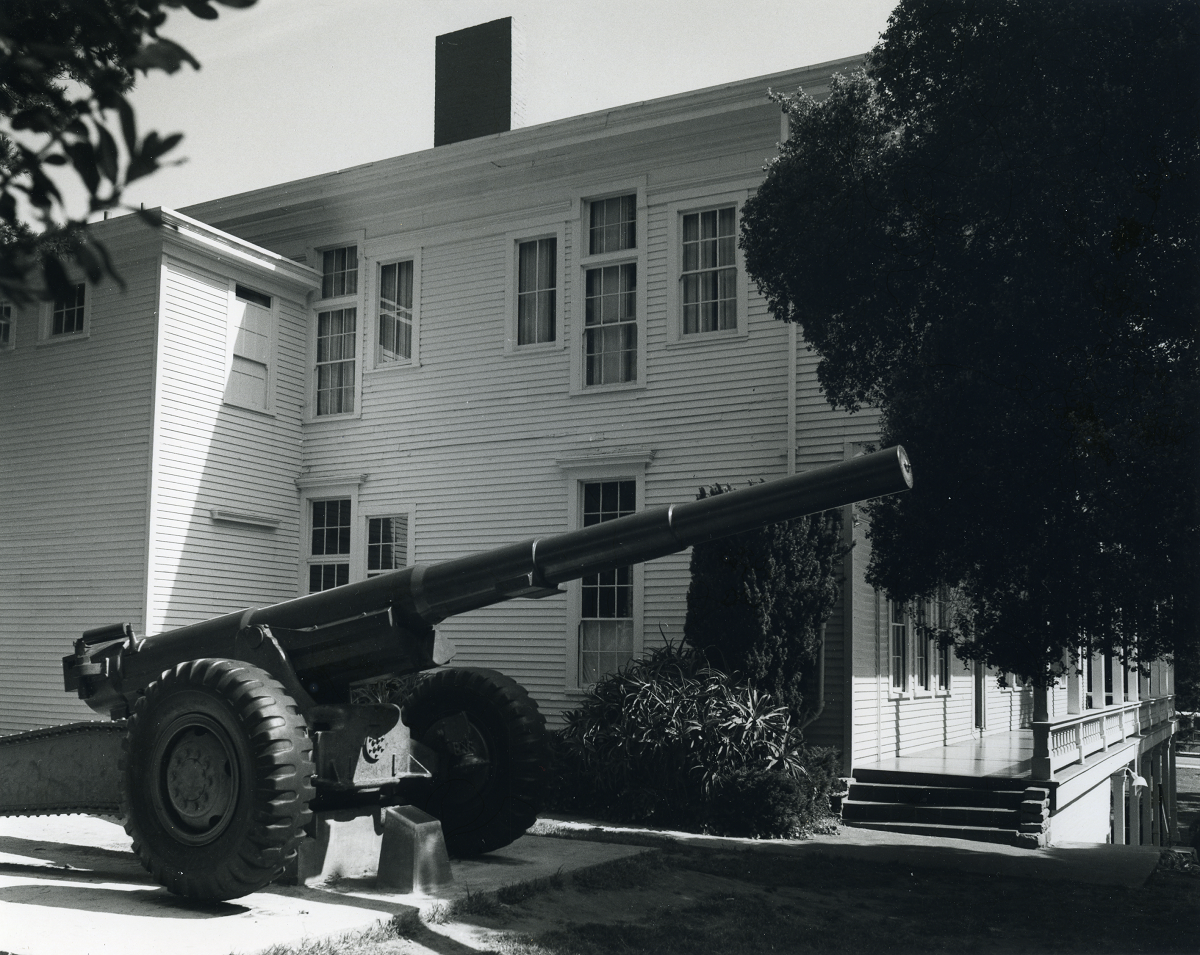
South side of the Presidio Army Museum. This was an original 155mm Howitzer, which was originally used by the Coast Artillery at the Presidio of San Francisco during World War II.

The Spanish, Mexican, and Civil War galleries of the Museum. The galleries featured a special diorama of the early Spanish Presidio that was built for the Golden Gate International Exhibition on Treasure Island in 1939-40.

Civil War gallery of the Presidio Army Museum. It featured the stories of the early Third Artillery Regiment and the role of the museum building as a hospital facility.

Gallery depicting the Modoc Indian Wars. The buckskin jacket on the figure on the left was actually worn by Kintpuash, also known as Captain Jack, leader of the Modoc Indians in their campaign against the U.S. Army.

Kintpuash killed General Edward R. S. Canby during a peace conference. The figure on the right depicts General Canby, who was the only general killed in the Indian Wars. Kintpuash and several followers were executed by the Army.
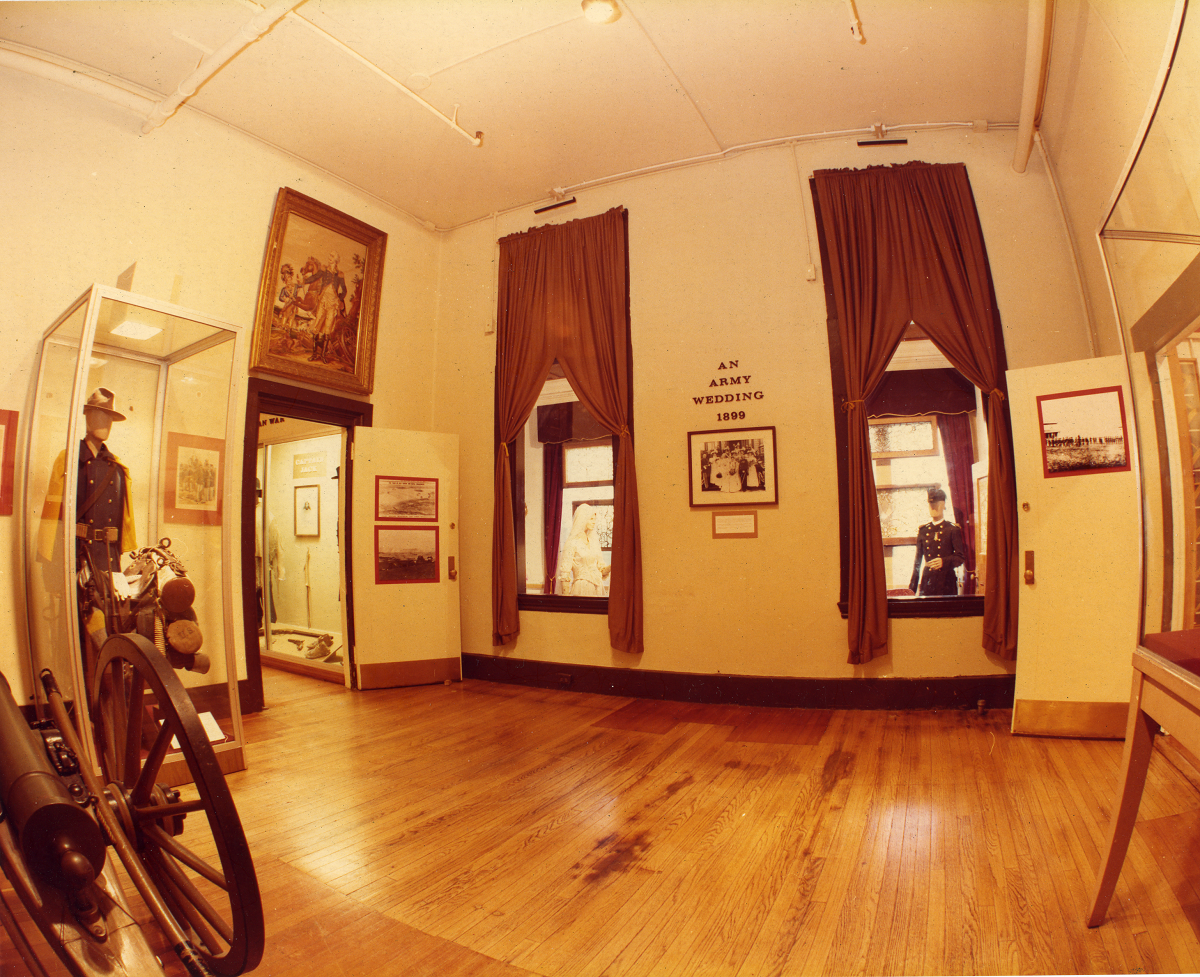
Indian Wars gallery of the Presidio Army Museum. On the left is a model 1841 Mountain Howitzer.
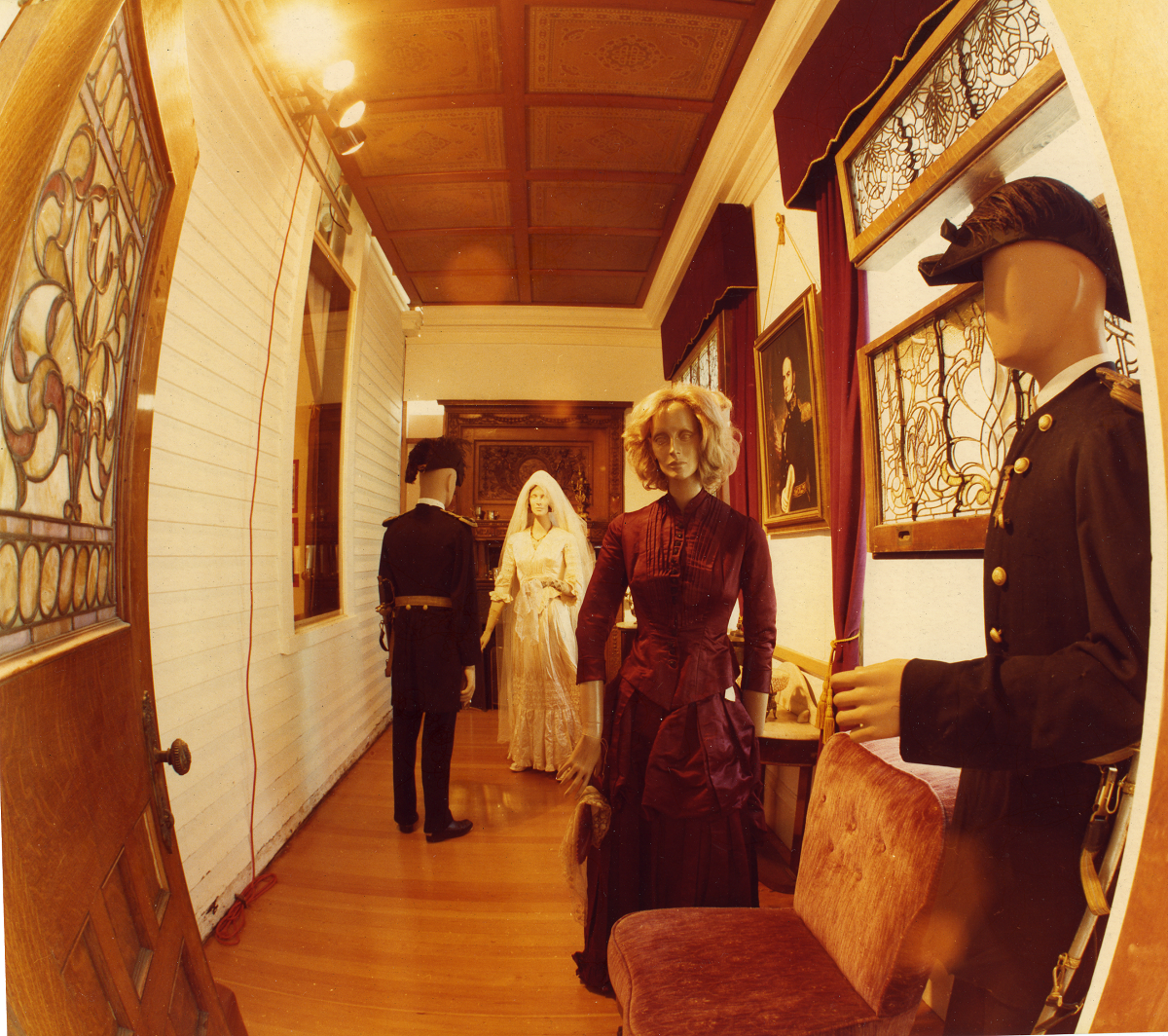
A depiction of a U.S. Army wedding in the mid-1880s. It featured authentic Army officer’s uniforms and ladies’ gowns. The gallery was sponsored by Clytie Smith. Antiques and architectural pieces in the room came from the old Templeton mansion in San Francisco.
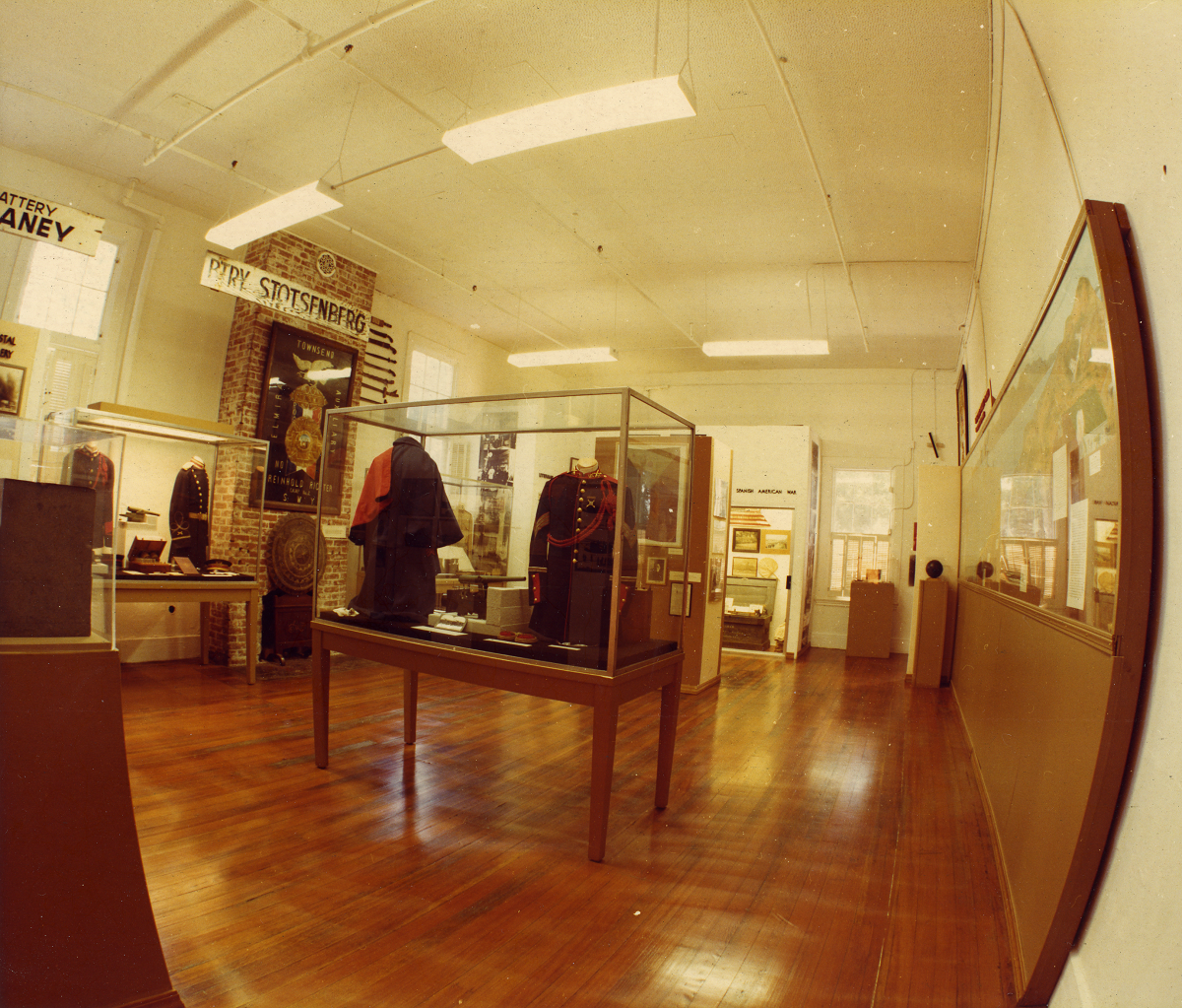
The North gallery on the first floor of the Presidio Army Museum. It depicted the old Coast Artillery and the Spanish American War period, 1898 through 1916.
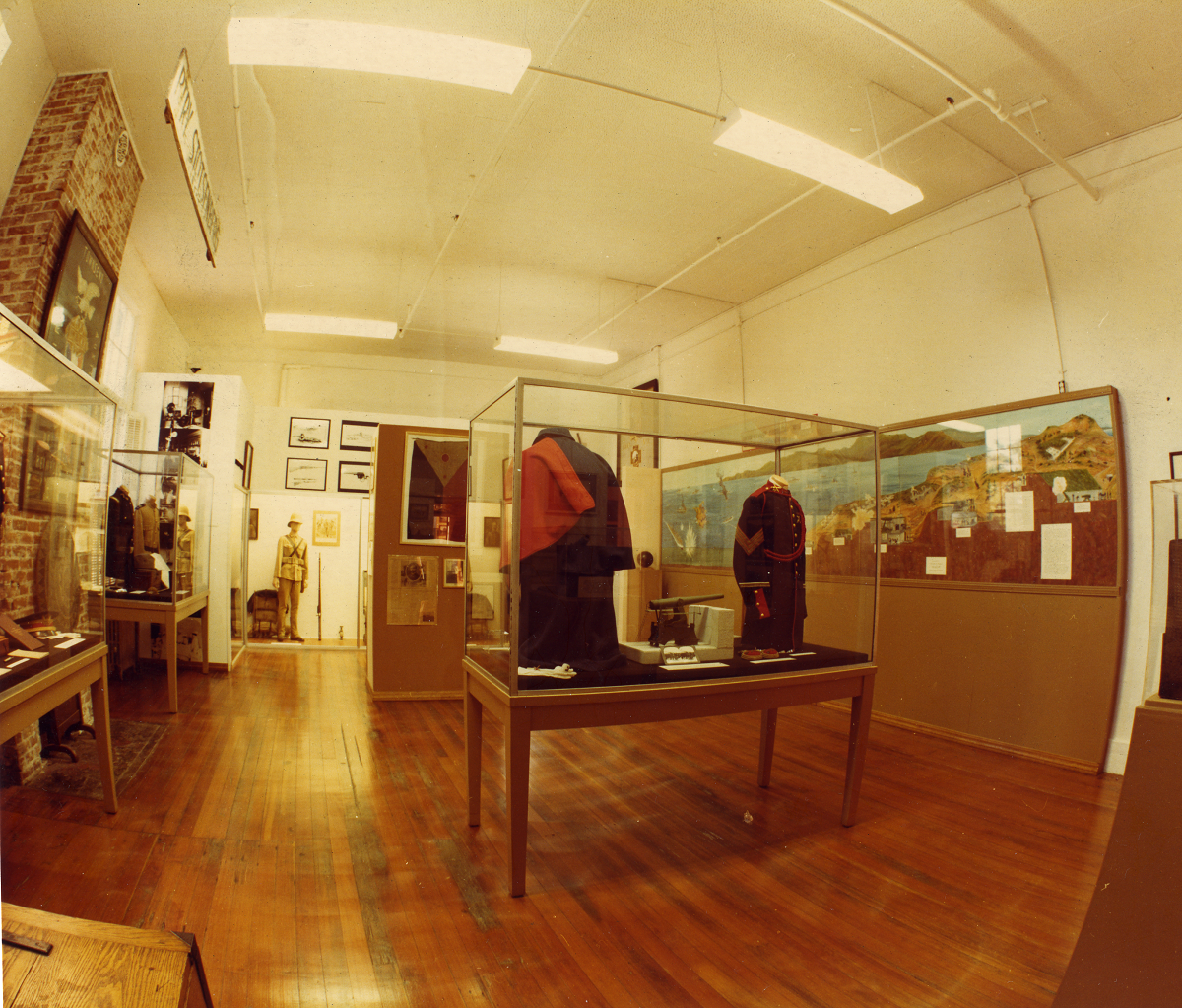
Foreground shows uniforms of the U.S. Coast Artillery, 1881-1902.
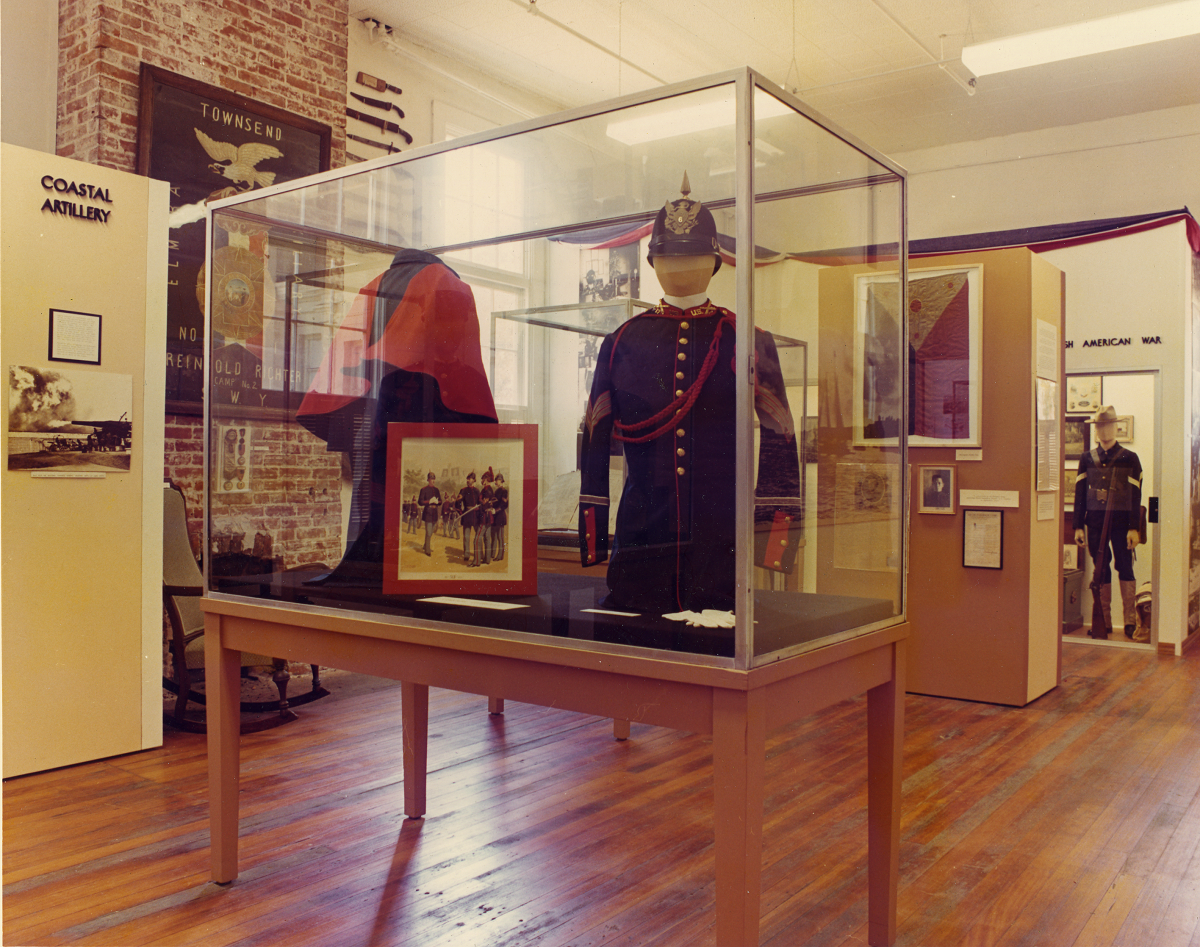
Full dress Coast Artillery uniform and great coat. The Presidio had one of the most elaborate coastal defense systems in the United States. There were 25 modern emplacements constructed from the 1890s through World War II.
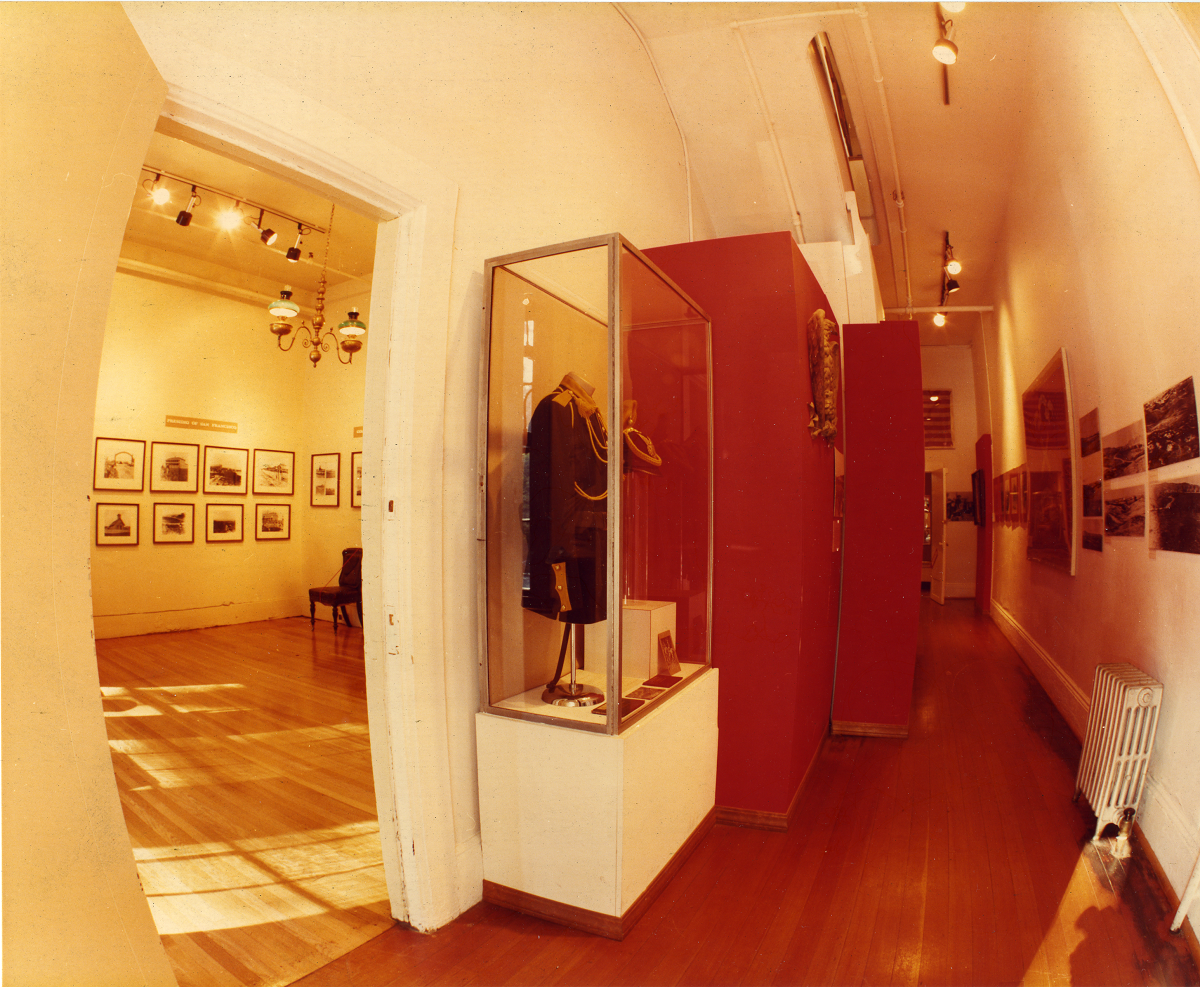
Gallery depicting architecture of the Presidio in the mid-Nineteenth Century. Uniform is a U.S. model 1887 full dress cavalry enlisted blouse. The cavalry at the Presidio was detailed to guard the early National Parks.

Gift shop in the front entrance gallery of the Presidio Army Museum. Portrait is of General Winfield Scott. Fort Winfield Scott, at the Presidio, was named for him. It was the portion of the post designated for the barracks and Coast Artillery installations.
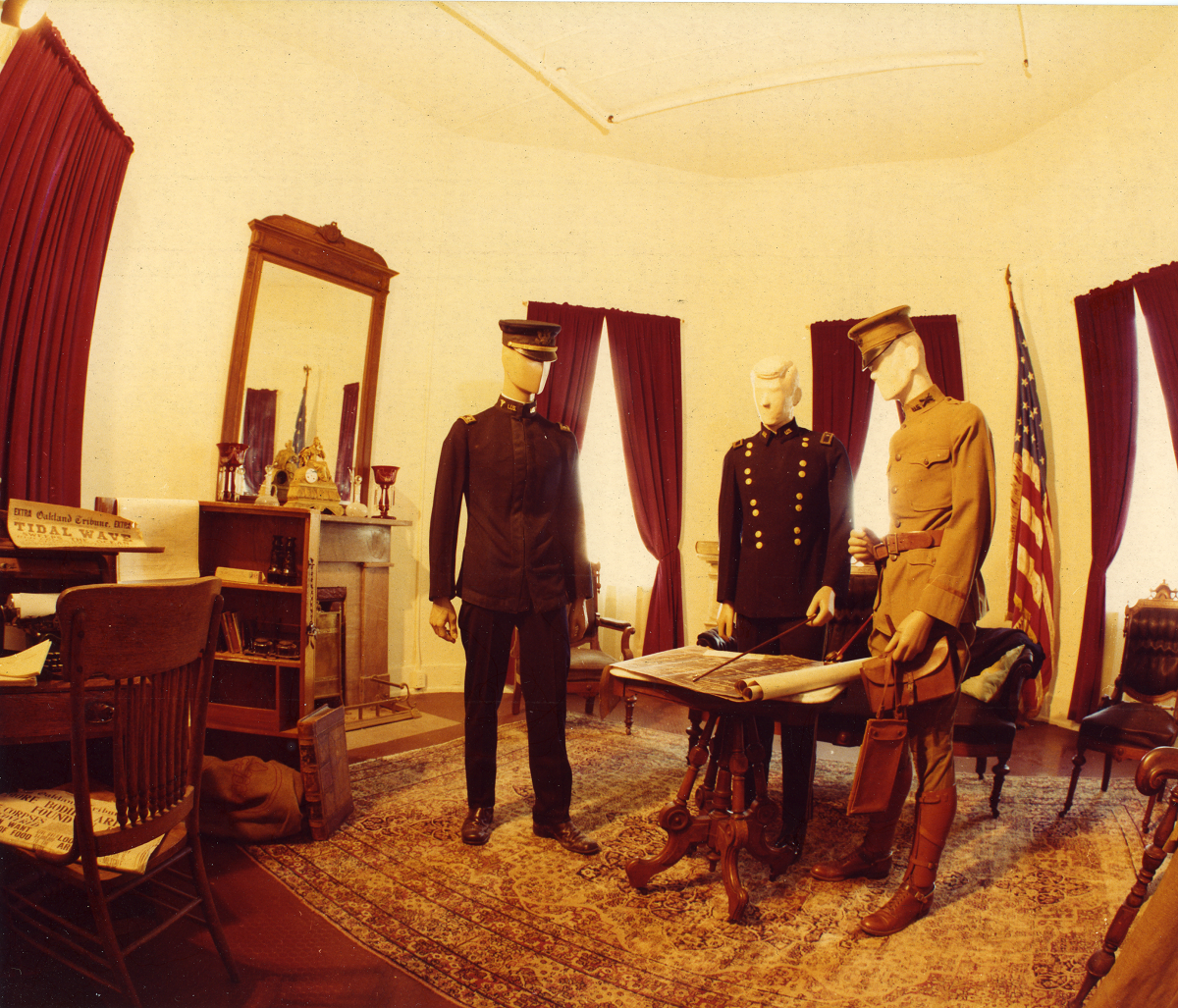
Recreation of the U.S. Army Headquarters at Fort Mason. General Frederick Funston and his staffs of the Department of the Pacific and California were active in putting out and controlling the fires in San Francisco during the disaster of April 18-20, 1906.
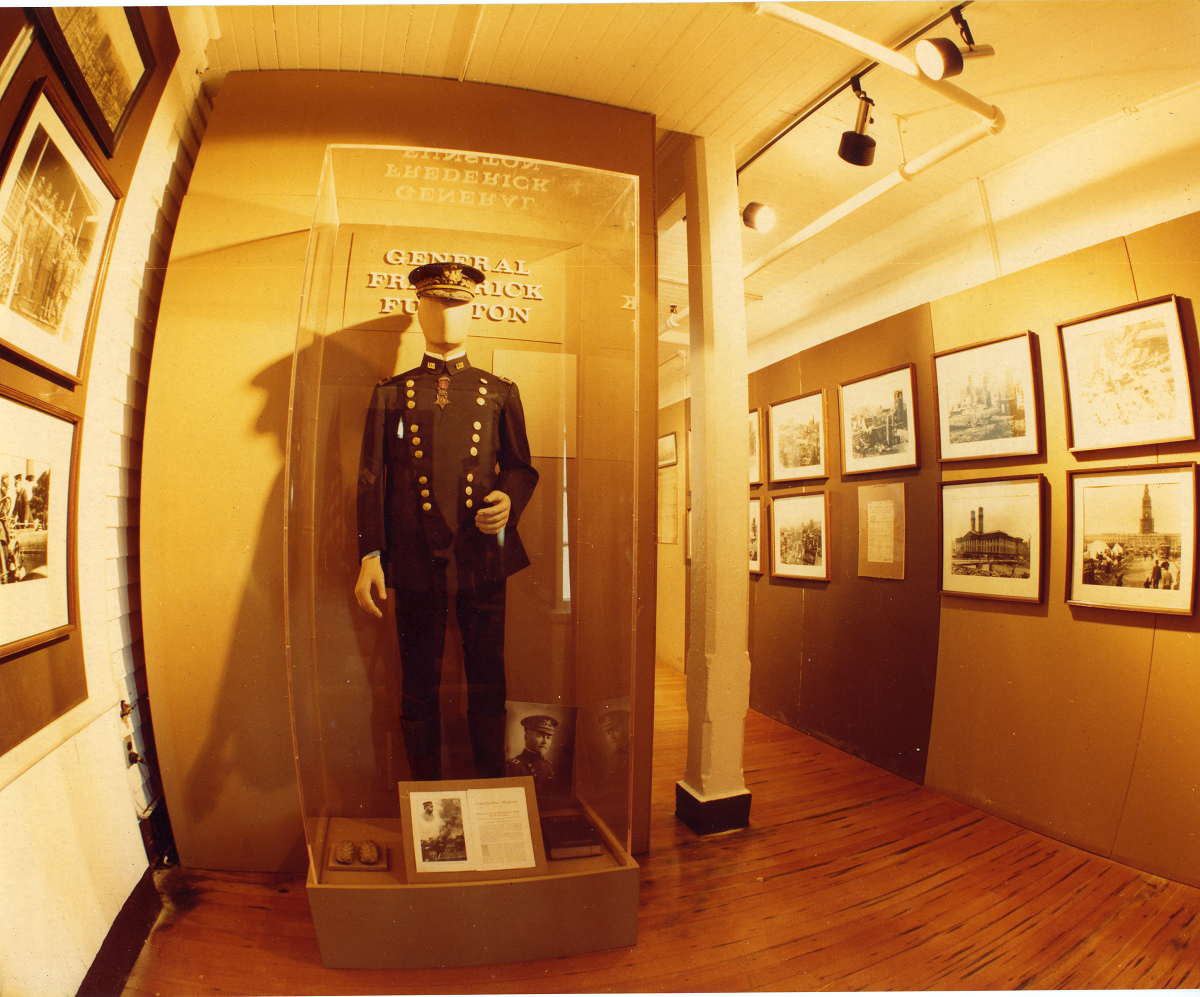
The actual uniform and Medal of Honor worn by General Frederick Funston. Funston was the commander of the Army at the Presidio of San Francisco during the earthquake and fire of 1906. His Medal of Honor was awarded while he was with the 20th Kansas in the Philippines.
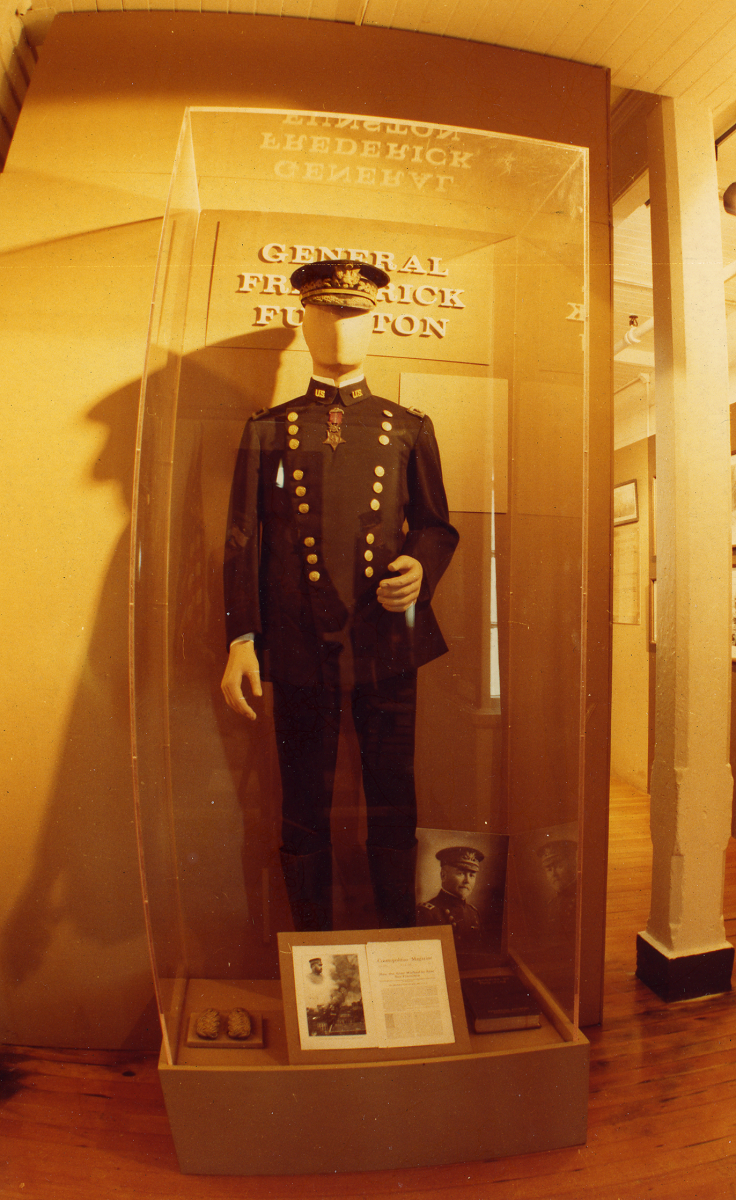
General Funston’s full dress 1902 uniform. General Funston had been designated by President Woodrow Wilson to command the American Expeditionary Forces (AEF) to France. He died of a heart attack while serving during the Mexican Punitive Expedition.
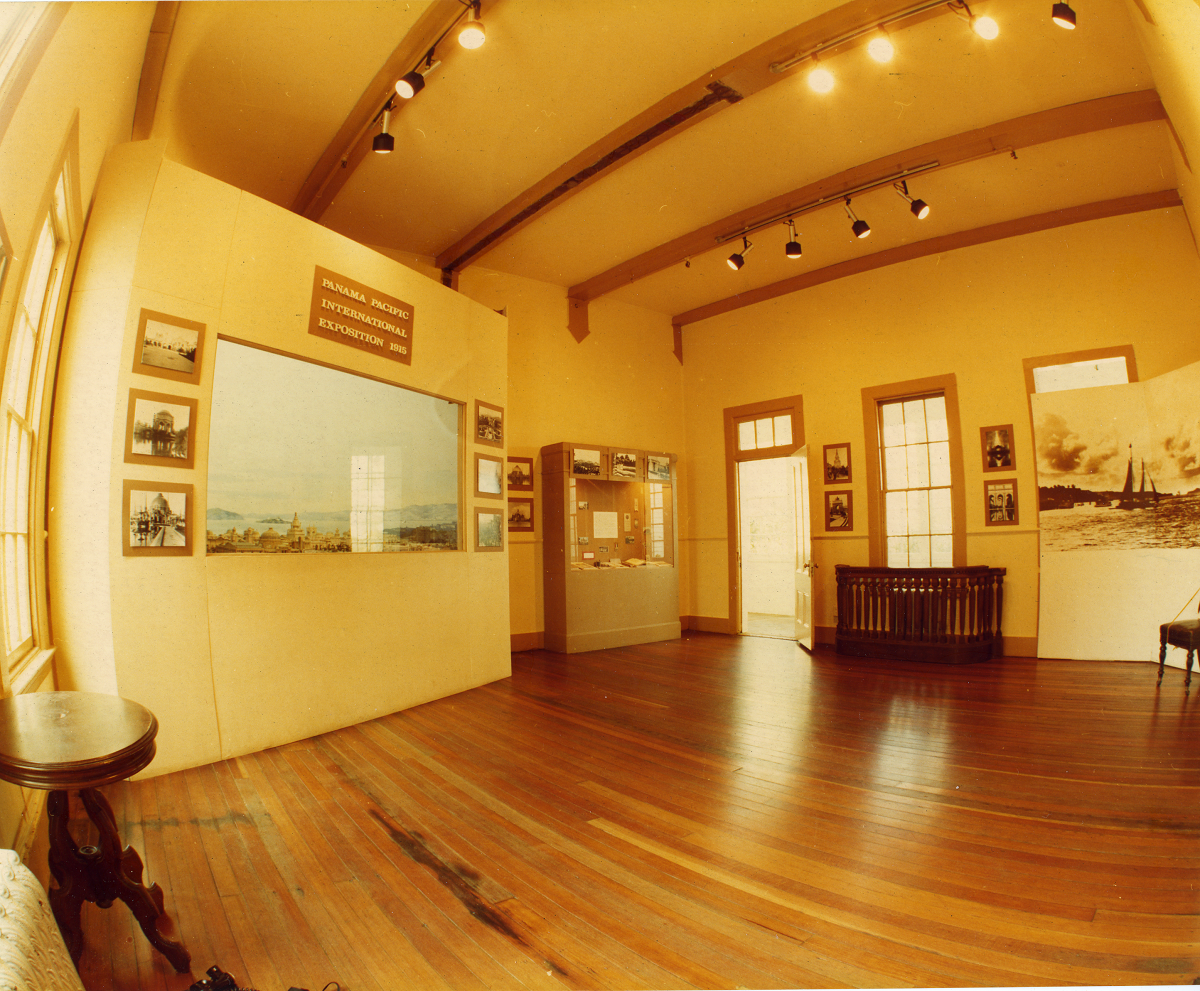
Gallery depicting the Panama Pacific International Exposition in San Francisco (PPIE), 1915. The world’s fair was held on the Presidio and on landfill area that later became the Marina. The diorama was displayed at the 1939-40 world’s fair on Treasure Island.
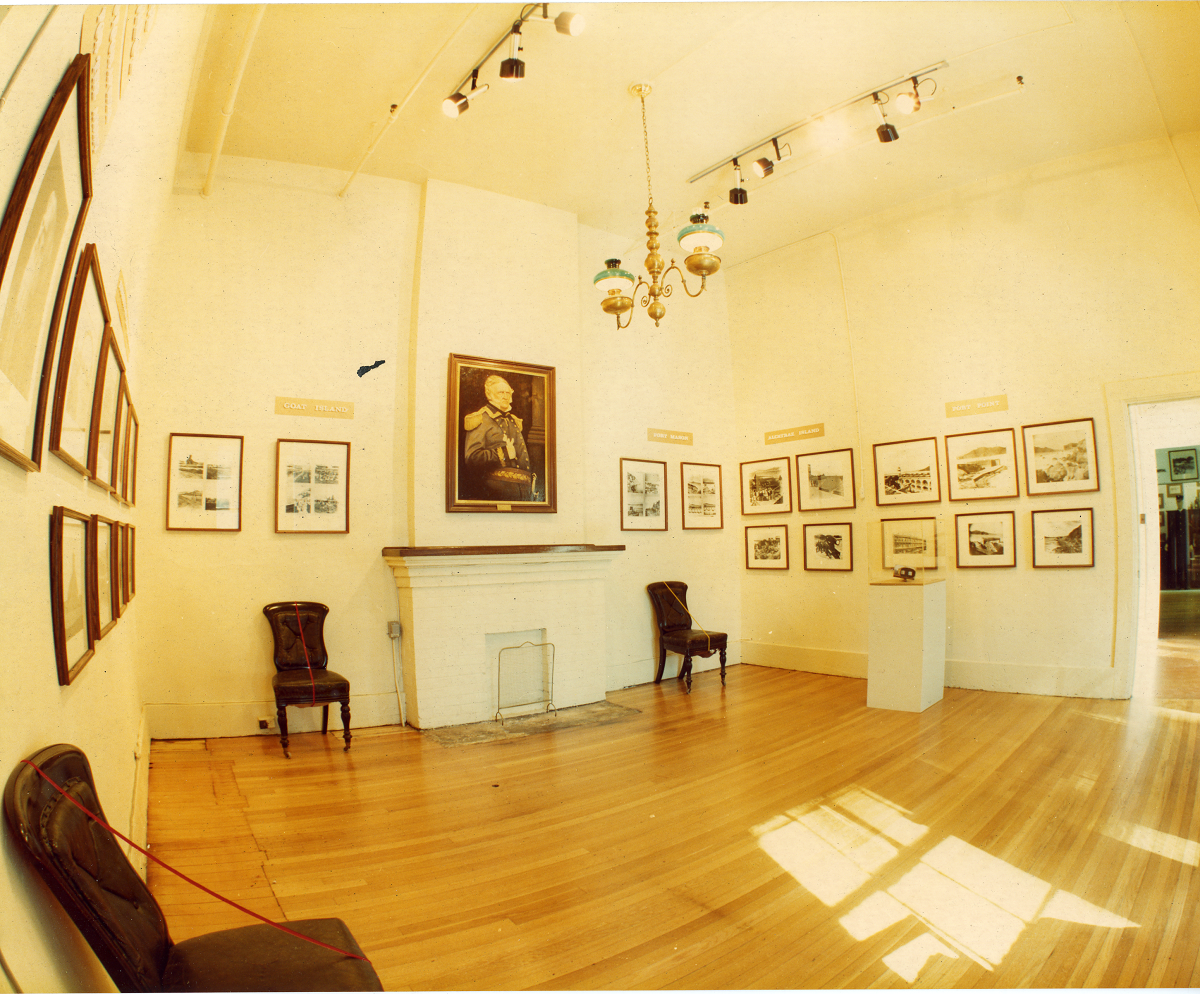
Entrance gallery of the Presidio Army Museum circa 1984. The photographs depict scenes of the Presidio, Fort Mason, and Alcatraz, taken in the late 1860s by Eadweard Muybridge, who later took sequential photographs of a horse running, which became the first motion picture.
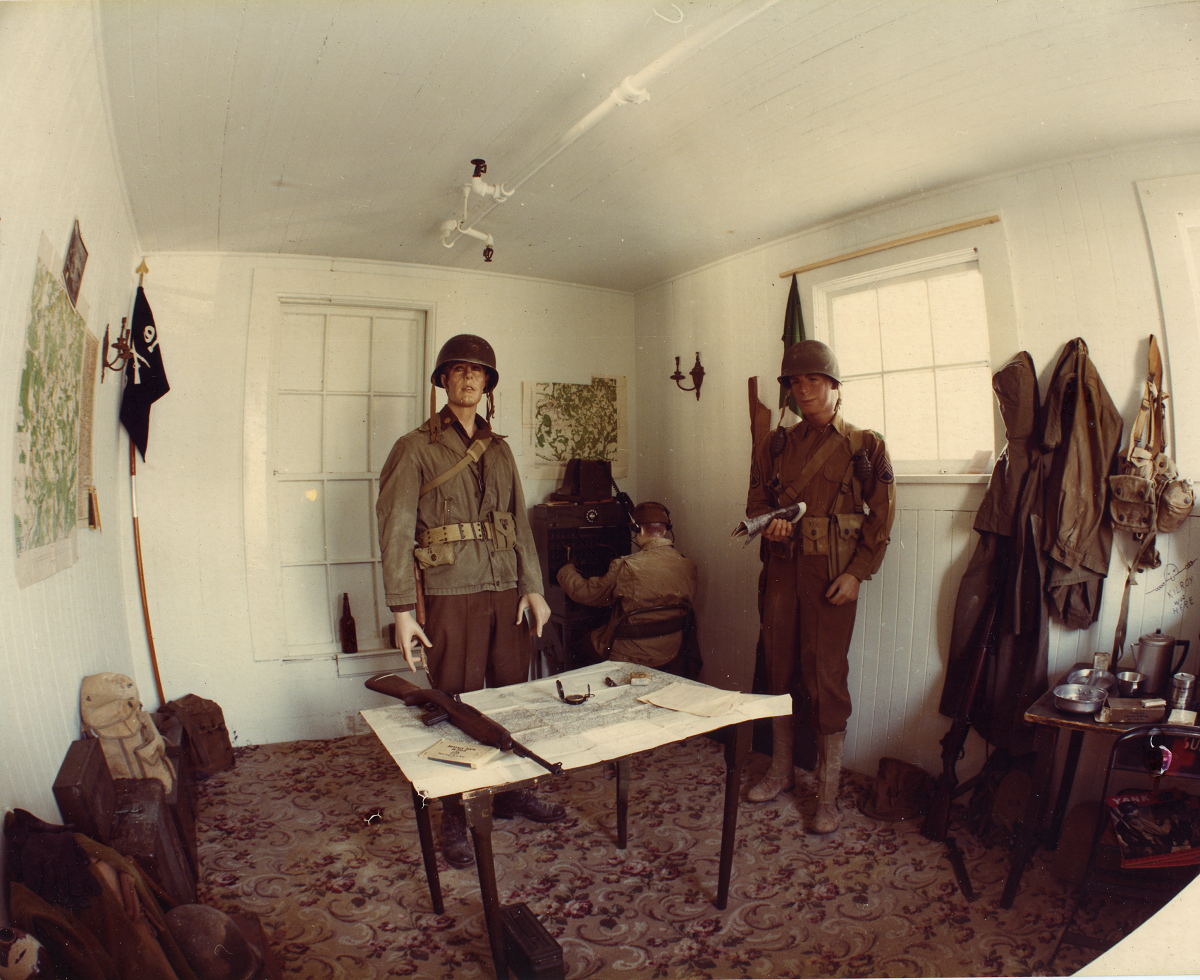
Exhibit honoring California’s 91st Division. This depicts an observation and command post of the 91st Division in their campaign in Italy during World War II. The gallery was sponsored by the 91st Division Association.

